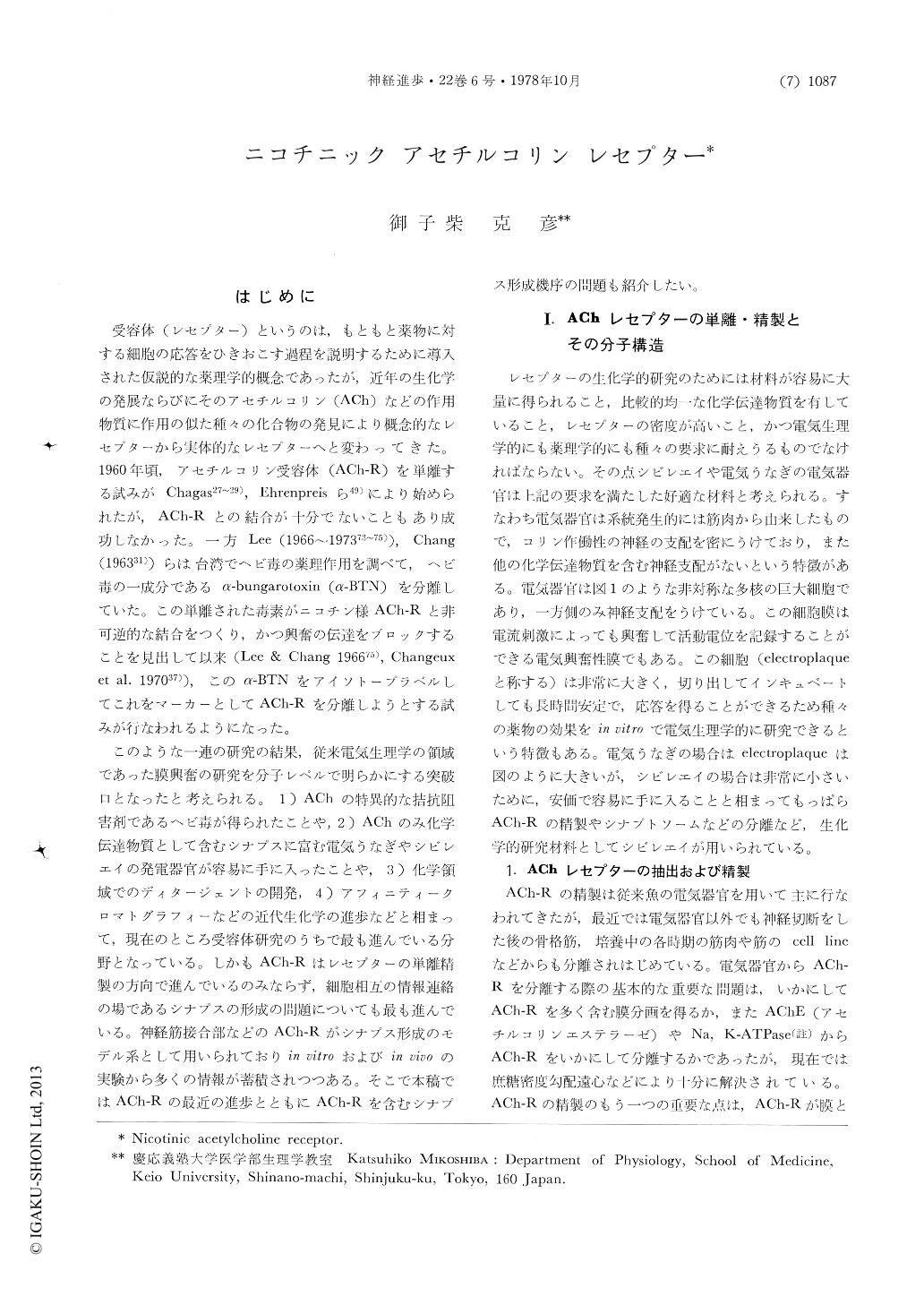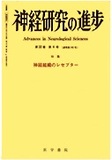Japanese
English
- 有料閲覧
- Abstract 文献概要
- 1ページ目 Look Inside
はじめに
受容体(レセプター)というのは,もともと薬物に対する細胞の応答をひきおこす過程を説明するために導入された仮説的な薬理学的概念であったが,近年の生化学の発展ならびにそのアセチルコリン(ACh)などの作用物質に作用の似た種々の化合物の発見により概念的なレセプターから実体的なレセプターへと変わってきた。1960年頃,アセチルコリン受容体(ACh-R)を単離する試みがChagas27〜29),Ehrenpreisら49)により始められたが,ACh-Rとの結合が十分でないこともあり成功しなかった。一方Lee(1966〜197373〜75)),Chang(196331))らは台湾でヘビ毒の薬理作用を調べて,ヘビ毒の一成分であるα-bungarotoxin(α-BTN)を分離していた。この単離された毒素がニコチン様ACh-Rと非可逆的な結合をつくり,かつ興奮の伝達をブロックすることを見出して以来(Lee & Chang 196675),Changeuxet al. 197037)),このα-BTNをアイソトープラベルしてこれをマーカーとしてACh-Rを分離しようとする試みが行なわれるようになった。
このような一連の研究の結果,従来電気生理学の領域であった膜興奮の研究を分子レベルで明らかにする突破口となったと考えられる。
Electric organ of Torpedo (marmorata, californica or ocellata) or Electrophorus electricus have been used to purify ACh receptor, since electric organ is highly condensed with ACh receptors. ACh receptors have been partially purified by the combination of sucrose density gradient and detergent treatment. They have been purified to homogeneity by using α-bungarotoxin or affinity labelling method. Acetylcholine receptor is an oligomer of which sedimentation coefficient of 9s. The molecular weight is about 250~300,000 by hydrodynamics or osmometry.

Copyright © 1978, Igaku-Shoin Ltd. All rights reserved.


